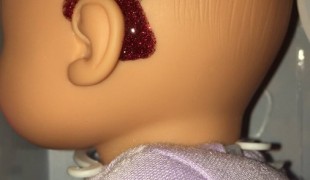- 6936
- 430
- 17
- 15
- 0
- Help Ukraine
About the solution
Dylan suffers from partial-complex seizures, which affect her awareness and can cause her to lose consciousness. Because of that, she has been experiencing epileptic seizures for more than a decade.
"After facing a lot of discrimination, I realized that people have heard about epilepsy, but they have no idea what to do when they hear someone has epilepsy. I know firsthand telling people I have epilepsy, they immediately freak out. “That’s what inspired me to make this Epilepsy Toolkit. You’re going to have a student in your class or your school who has epilepsy and people don’t know how to handle it,” the innovator explained.
The severity of epileptic seizures vary by patient, so she wanted to find a way to help others understand what a seizure is and how they can help.
The epileptic toolkit has an information pamphlet, a stopwatch (so that someone can time the length of the seizure) and an audio device that provides instructions on what to do in the event of a seizure.
"The most important thing in this toolkit is a pamphlet that describes the common types of seizures, along with first aid instructions," said Di Girolamo.
The toolkit was entered into the IDeA competition hosted by Universities Canada. She placed second in the Attitudinal/Systemic Barriers category, taking home $1,500.
Each toolkit has a development cost of about $15, with the option of adding a teddy bear.
Dylan launched a crowdfunding campaign to help make this invention “a reality”.
Adapted from: https://bit.ly/2JW96vr
More info: https://www.gofundme.com/f/epilepsy-toolkit
https://www.youtube.com/watch?v=t4Xx_gTo0P0
This solution shall not include mention to the use of drugs, chemicals or biologicals (including food); invasive devices; offensive, commercial or inherently dangerous content. This solution was not medically validated. Proceed with caution! If you have any doubts, please consult with a health professional.
DISCLAIMER: This story was written by someone who is not the author of the solution, therefore please be advised that, although it was written with the utmost respect for the innovation and the innovator, there can be some incorrect statements. If you find any errors please contact the patient Innovation team via info@patient-innovation.com
-
-
272
-
0
-
3359

Mom Abby Ekmark creates Autism Safety Toolkit Inspired by her son Rudy Alejos
CAREGIVING
COMMUNICATION: Communicating, whether by speaking, listening, or other means
Autism
5 Senses support devices: (glasses, hearing aids, headphones...)
Book/Comic
Strategy/Tip
Educational/Leisure device (book, toy, game...)
Promoting self-management
Managing Neurological Disorders
Building Supportive Community Relationships
Promoting inclusivity and social integration
Raise awareness
Caregiving Support
Child and Adolescent Psychiatry
General and Family Medicine
Neurology
Pediatrics
United States
-
-
-
327
-
0
-
3720

After losing son to rare disease, woman creates project to help mothers with children with special needs
CAREGIVING
COMMUNICATION: Communicating, whether by speaking, listening, or other means
Social interaction
Neuromuscular Disorders
Strategy/Tip
Social Media
Tremors
Muscle cramps or spasms
Stiffness or rigidity (difficulty moving)
Paralysis of the legs and lower body
Muscle weakness
Loss of balance
Trouble with fine motor skills (e.g., writing, buttoning clothes)
Numbness or tingling in the extremities
Twitching or involuntary movements (myoclonus)
Seizures
Enhancing health literacy
Building Supportive Community Relationships
Promoting inclusivity and social integration
Enhancing Mental Health
Preventing (Vaccination, Protection, Falls, Research/Mapping)
Raise awareness
Caregiving Support
General and Family Medicine
Neurology
Pediatrics
Psychiatry
Brazil
-
-
-
355
-
0
-
5500

Teacher modifies toys to help kids feel represented
CAREGIVING
COMMUNICATION: Communicating, whether by speaking, listening, or other means
Hearing Disorders
Educational/Leisure device (book, toy, game...)
Hearing loss or ringing in the ears (tinnitus)
Enhancing health literacy
Building Supportive Community Relationships
Promoting inclusivity and social integration
Improving Speech and Communication
Raise awareness
Neurology
Otorhinolaryngology
United States
-
 en
en